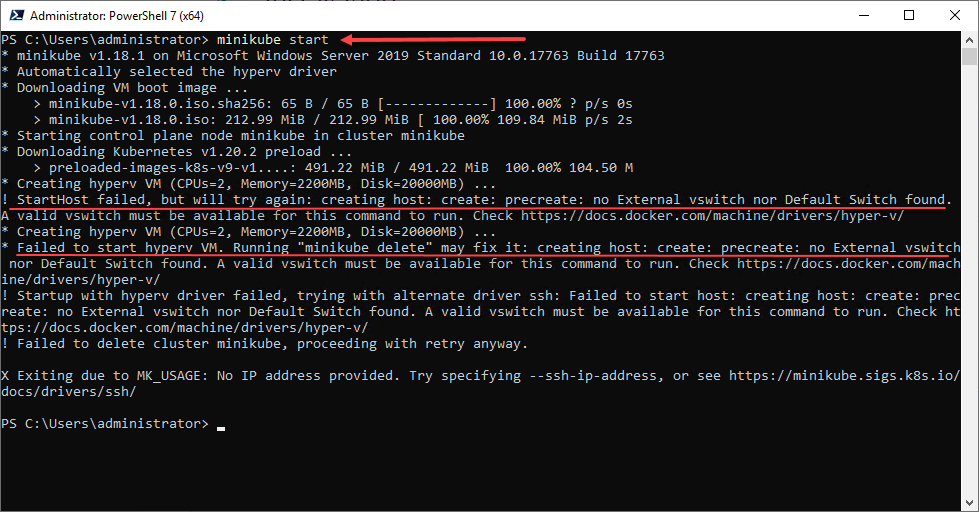
Docker Hyperkit Memory Mac Is A
When building my image from my Dockerfile(see below) and run the container it makes hyperkit use an insane amount of memory which is okay when building images, but it seems like that memory isn't released afterwards which makes it stay at around the 3GB.I'm afraid I haven't been able to get my point across.Docker for Mac is a desktop app which allows building, testing and running Dockerized apps on the Mac. Com.docker.hyperkit takes up 3GB. Com.docker.hyperkit to only take up the needed memory.
To increase the RAM, set this to a higher number. All do a pretty good job nowadays.Memory: By default, Docker Desktop is set to use 2 GB runtime memory, allocated from the total available memory on your Mac. The value in this column is what's currently physically allocated to com.docker.hyperkit.Docker for Mac (after some optimization) is probably usable. To see the 'Real Memory' used by Docker, right-click the column names in Activity Monitor and Select 'Real Memory'.
This isn't really a new concept (greetings to the freeBSD people). The fact that the new Docker for Mac will ship with Mutagen def shows me that they hear us and are doing whatever they can to alleviate the situation.Docker (on Linux) is different because it uses container-virtualization. Docker for Mac will be at the mercy of the macOS Hyperkit. The default is 1 GB.Whereas Microsoft was cooperative in creating a bridge to their kernel with WSL-2, Apple generally keeps macOS under lock and key. Swap: Configure swap file size as needed.
But usually there is a performance loss when running your program inside a virtual environment.It's like I'm saying a car is faster than a bicycle and you're saying that a bike can be faster than a car under certain conditions and that any place you're going to is close by so it doesn't make a difference anyways. Docker on Mac can't use containers.It might still have it's use cases since you're still able to use the Docker ecosystem, but as long as it has to use this additional layer, it is really more like all the other virtualization solutions out there and not like Docker.If you are experiencing a faster execution than on bare metal, that's some interesting anecdotal evidence. Docker for Mac uses HyperKit, a lightweight macOS virtualization solution.My point is, that Docker is built around the idea of using containers.

Docker Hyperkit Memory Code Edits To
So, this newest solution is the best setup I've been able to construct that gives you complete choice in editing tools on your OSX machine, while giving native performance with apps and keeping the convenience of fs events for your development workflow.While 2-way rsyncing gave native performance and choice of editing/work environment, it created other issues for synchronization and introduced some brittle overhead.The dev-with-docker-on-ubuntu solution is an attempt to give users a native feeling docker environment with a readily disposable/rebuildable development environment. Because NFS doesn't support fs eventing, exporting the FS from OSX to the linux guest doesn't work if you want code edits to trigger rebuilds or spec running in the docker guest. It would be much more economical to add the missing features to Virtual Box.But hey, if would be very glad to be wrong with that! This would be a very pleasant surprise.I've spent plenty of time with docker-machine, docker for mac, and ultimately found those solutions lacking or broken.I authored the solution after spending weeks getting a docker-machine solution with 2-way syncing via rsync running with configs that supported the generation of fsevents/inotify events on both the OSX and linux side of the equation. I don't see any serious effort to get it to same level as Parallels or VM Ware Fusion. It's for small experiments and to play around with Docker a little bit.
However, we haven’t achieved that stage yet (until teracy-dev).These are some of the problems that Docker community has to deal with on Mac and Windows:No consistent universal development environment and workflow on Linux, Windows, Mac. There are lots of efforts to solve this problem, from Docker themselves and from Docker community, too. I'm hoping it is a benefit to the community, because while docker has a lot of promise, the OSX solutions are painfully lacking.Disclaimer: I'm the author of teracy-dev where we bring Docker to Vagrant = love.Docker works great on Linux, however, it’s very challenging to make it work universal and consistent on Mac and Windows. We have about 5 webapps that we need to run concurrently for various parts of our development, and this gets us there fast.Happy to answer any questions if you have them, and if you choose to explore my solution any feedback is welcome.

Here are some test results. Doing some basic tests with maven. It brings development and production environment closer and closer.It is very important for a distributed team like us to work with everyone from different teams all over the world on different projects with different stacks and teracy-dev helps us a lot.Let’s have some comparisons between teracy-dev and other solutions:In summary, teracy-dev brings Docker closer to Vagrant = love.We ran into this issue as well back in July.


 0 kommentar(er)
0 kommentar(er)
